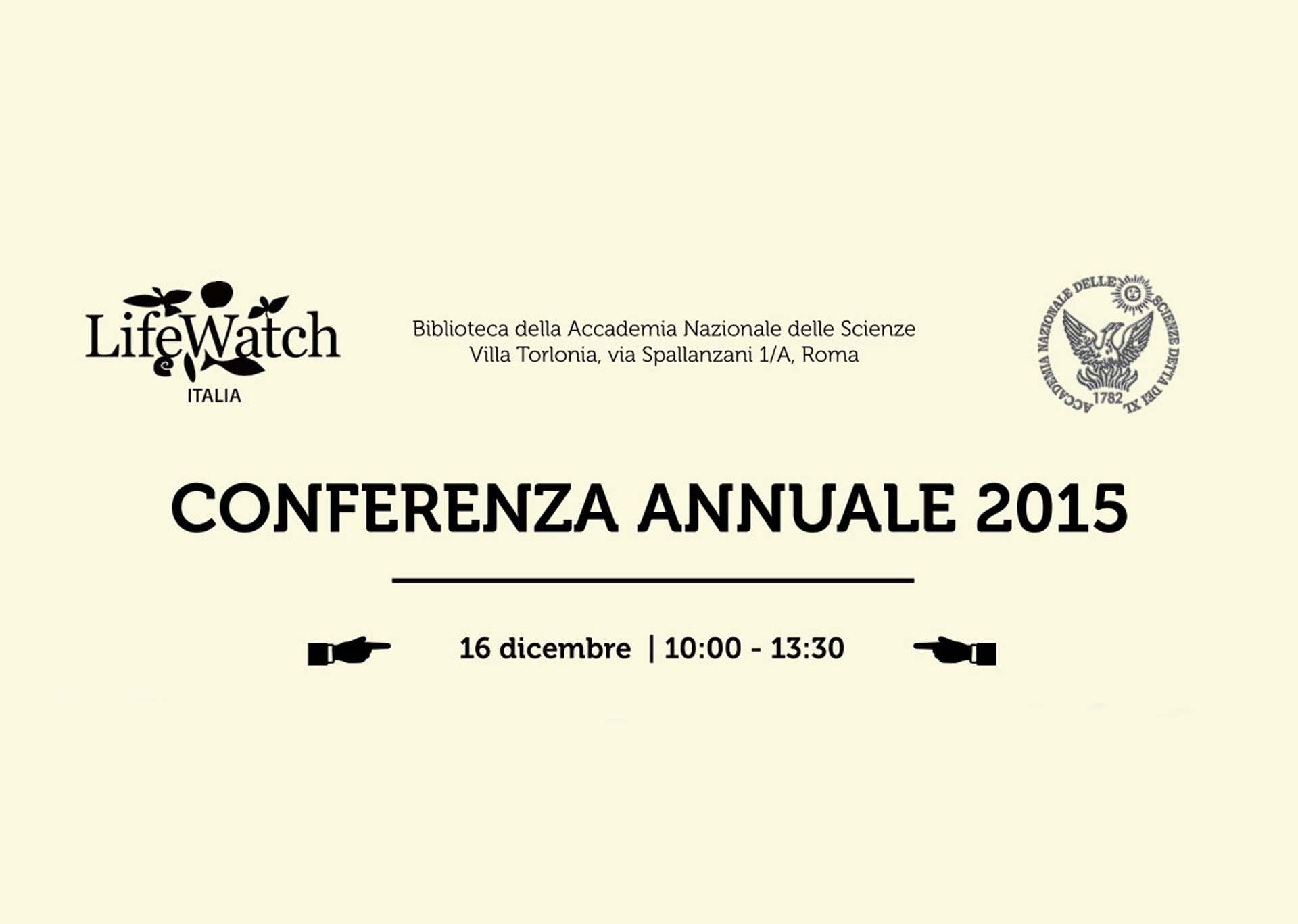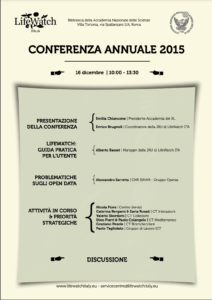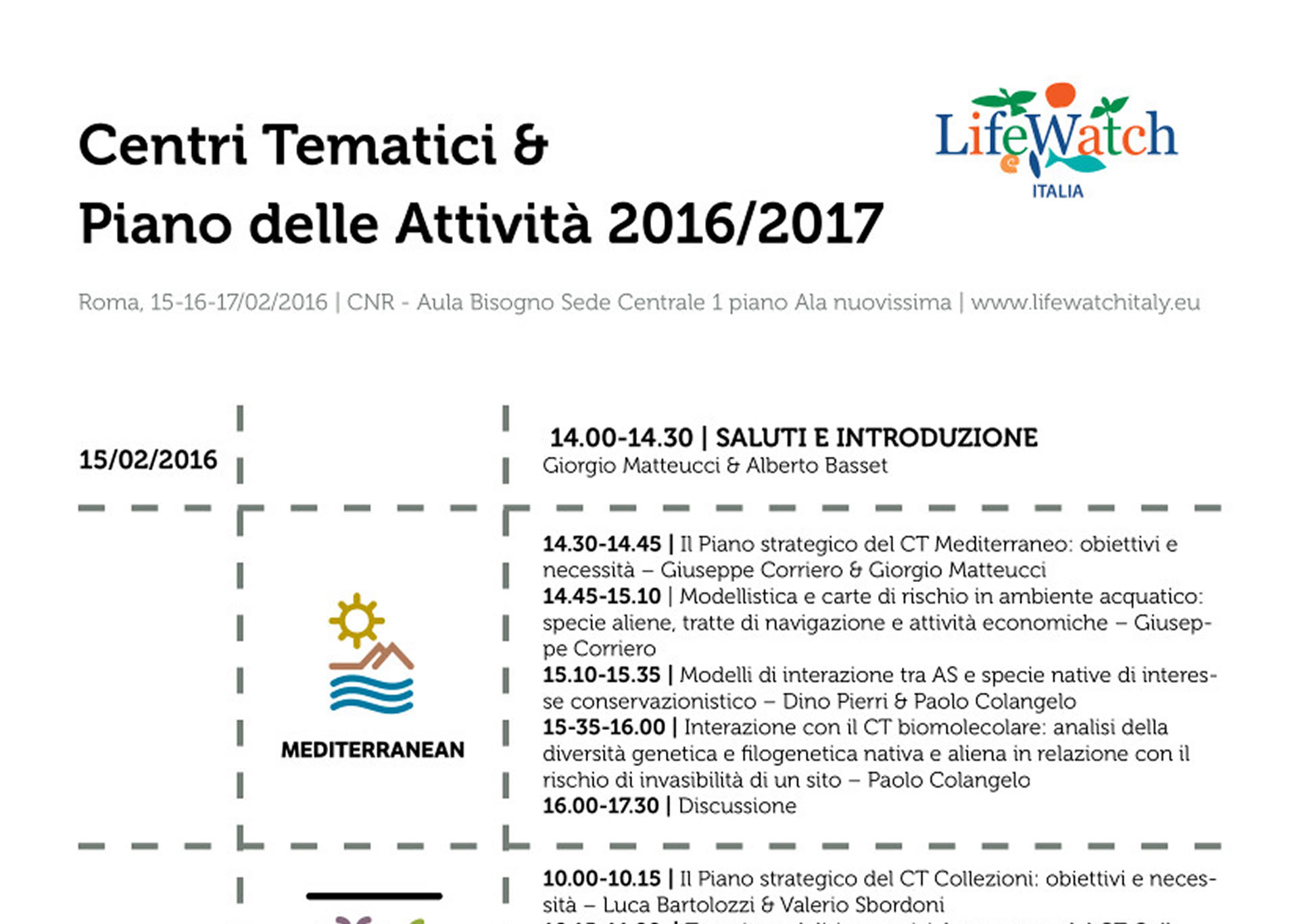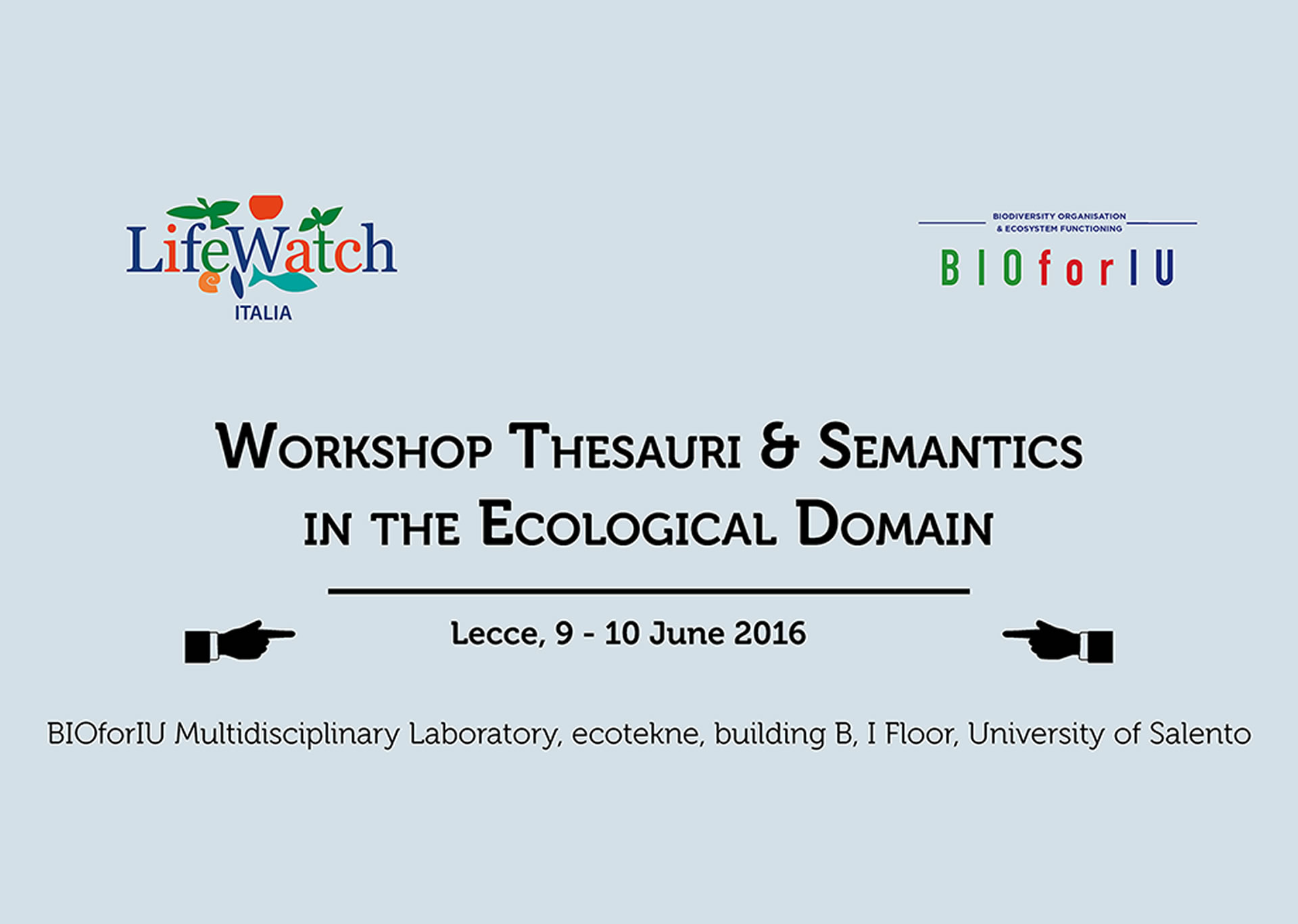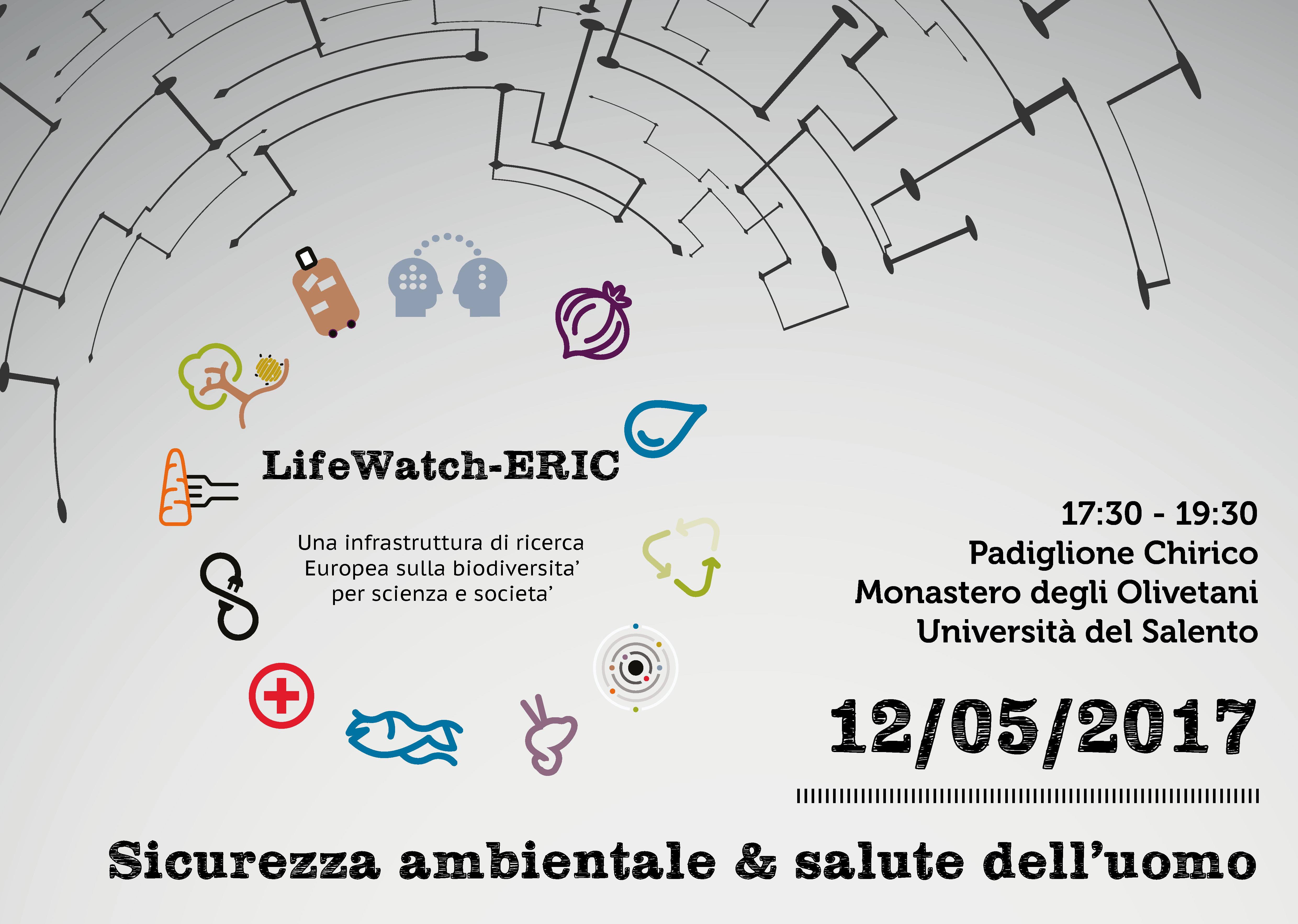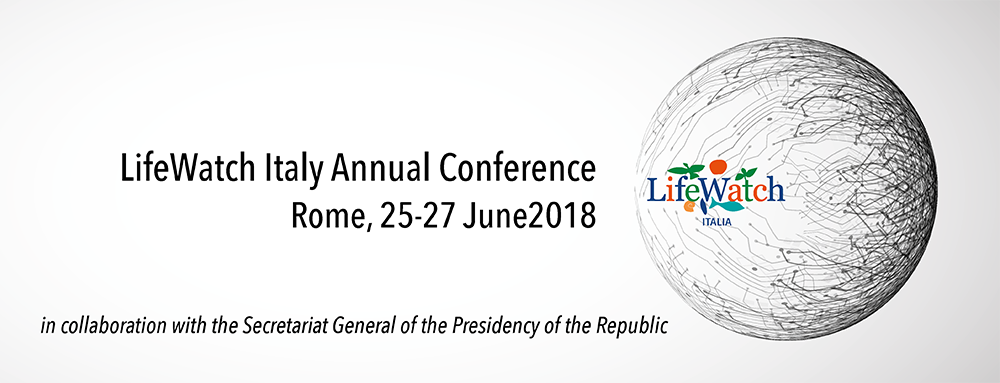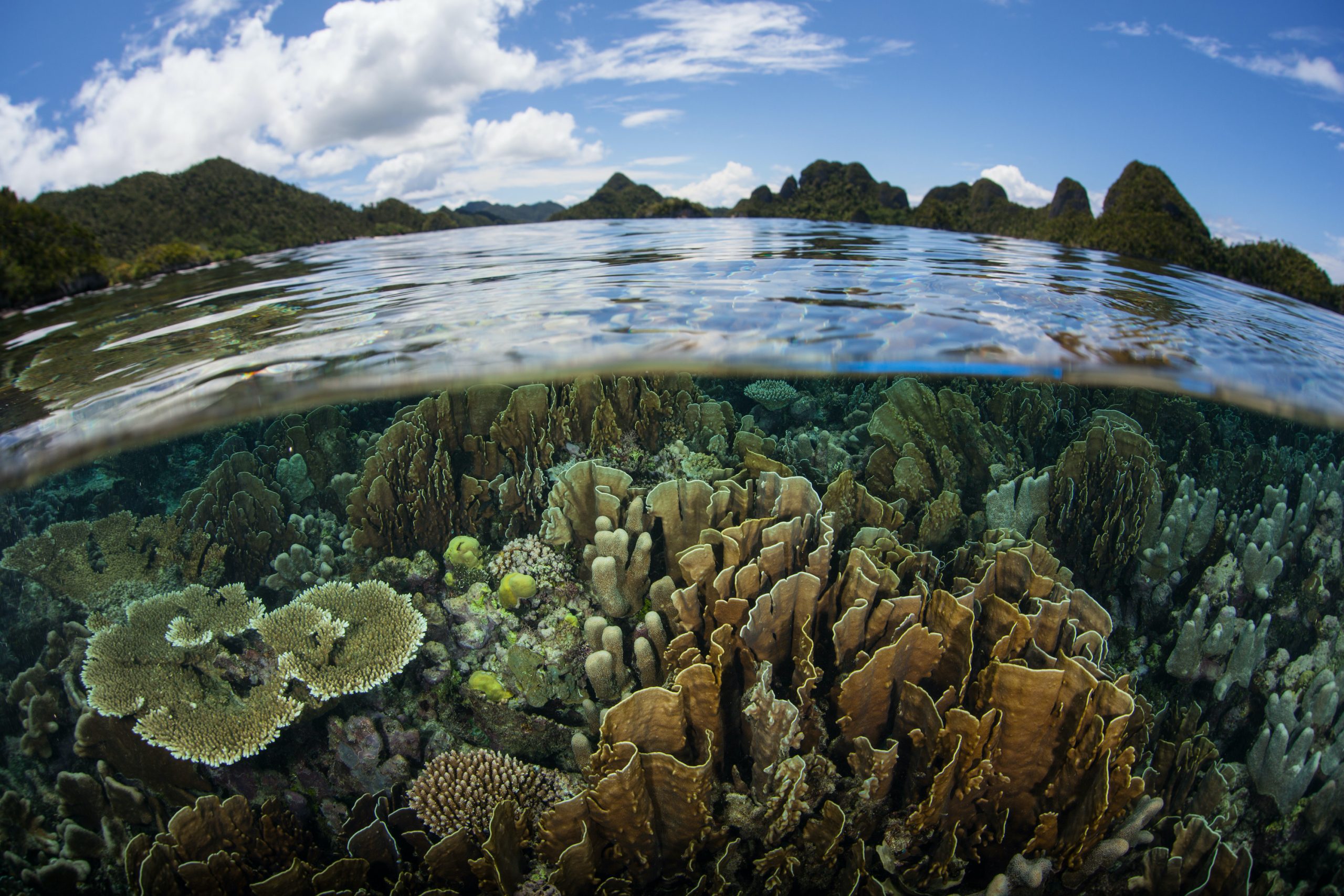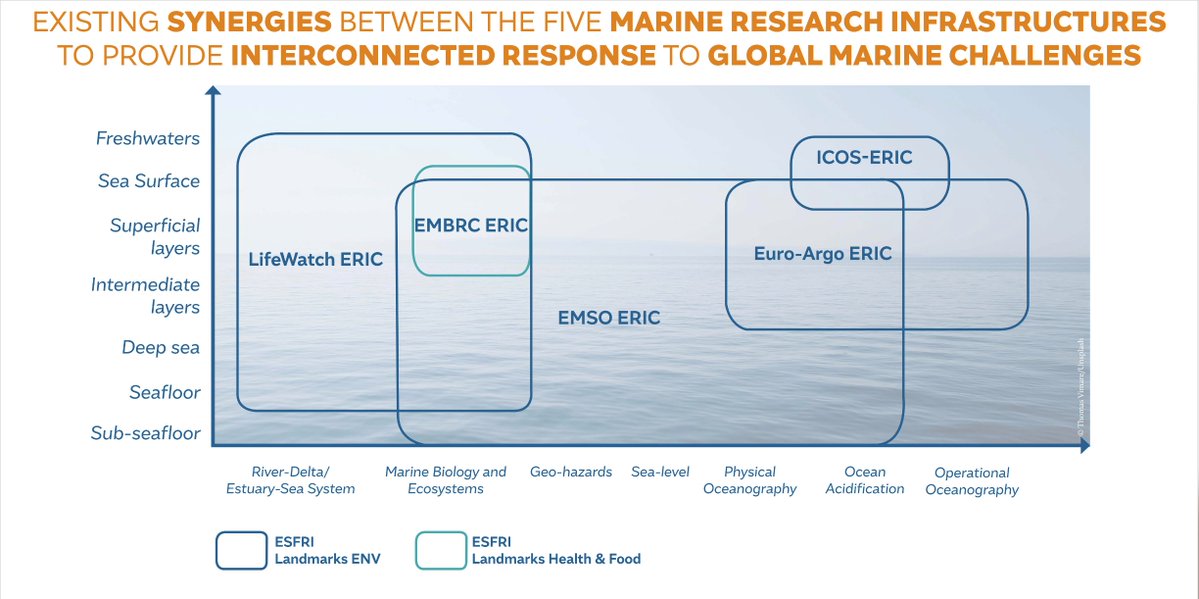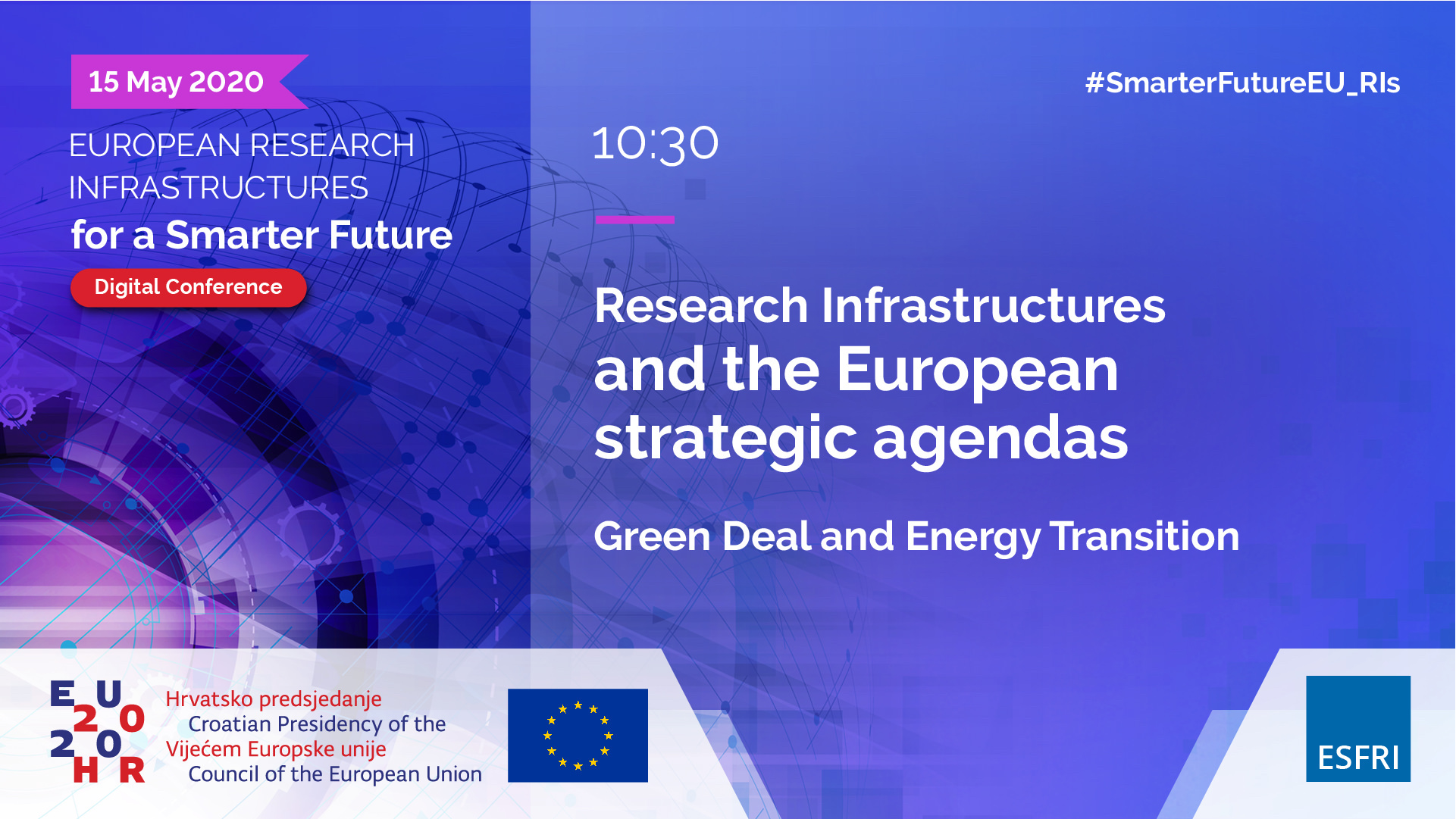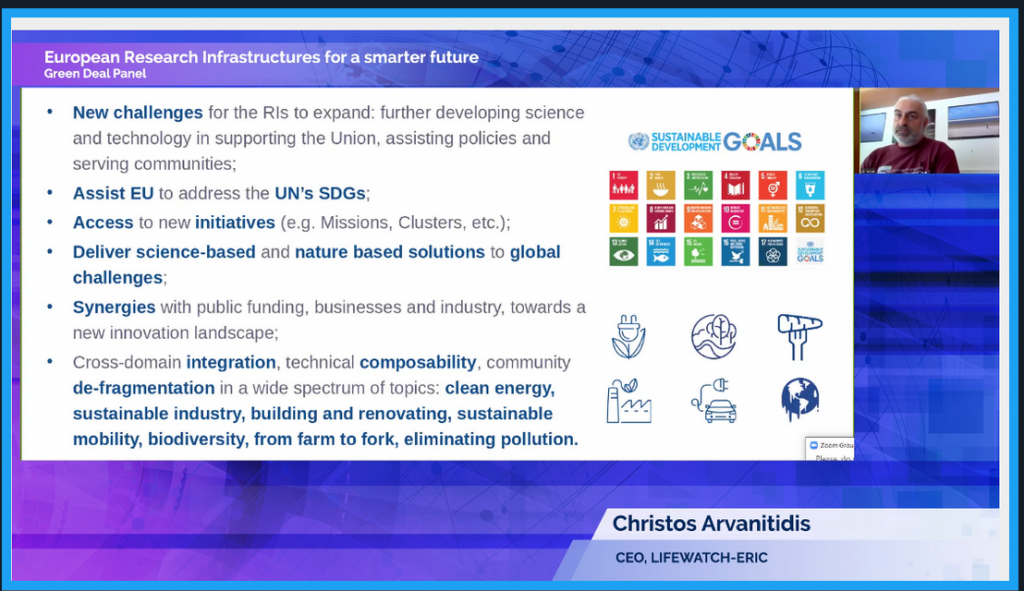Sicurezza Ambientale e Salute dell'Uomo
Lecce, 12/05/2017
Il Centro Servizi di LifeWatch-ERIC e l’Università del Salento organizzano la manifestazione “LifeWatch-ERIC – L’infrastruttura di ricerca Europea sulla biodiversità per scienza e società” a Lecce dal 12 al 26 maggio 2017 per presentare al territorio la nascita del 14° consorzio di infrastruttura di ricerca europea (ERIC) istituito dall’Unione Europea.
L’iniziativa “LifeWatch-ERIC – L’infrastruttura di ricerca Europea sulla biodiversità per scienza e società” si propone di presentare l’infrastruttura ed il suo valore per il territorio ad un pubblico vasto attraverso eventi tematici incentrati su sviluppo economico e sostenibilità, sicurezza ambientale e salute dell’uomo, agroalimentare, comunicazione, e culturali, conclusi da una conferenza scientifica finale.
Il primo appuntamento si terrà 12 maggio dalle 17:30 alle 19:30, presso il Padiglione Chirico del Monastero degli Olivetani (Università del Salento), con l’incontro dedicato a Sicurezza ambientale e salute dell’uomo.
La giornata si aprirà con un’intervista di circa mezz’ora sull’impatto dei cambiamenti climatici e gli scenari territoriali, con il Dott. Antonio Navarra (CMCC), cui seguirà il dibattito sui temi legati all’impatto delle specie aliene sul territorio, industria e ambiente-coniughiamo lo sviluppo e conservazione della biodiversità e degli ecosistemi. Parteciperanno, oltre il Dott. Navarra, i Prof. Giuseppe Corriero (Università di Bari), Prof. Fabio Pollice e Pier Luigi Portaluri (Università del Salento) e Dott. Giuseppe De Matteis (WWF Oasi). Nel corso dell’evento sarà presentato l’Ambiente Virtuale di Ricerca Specie Aliene realizzato da LifeWatch Italia. Modera il direttore del Nuovo Quotidiano di Puglia Claudio Scamardella.
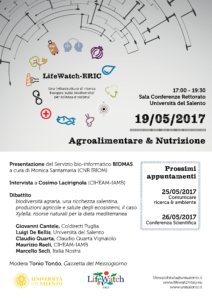
Agro-alimentare e nutrizione
Lecce, 19/05/2017
Il Centro Servizi di LifeWatch-ERIC e l’Università del Salento organizzano la manifestazione “LifeWatch-ERIC – L’infrastruttura di ricerca Europea sulla biodiversità per scienza e società” a Lecce dal 12 al 26 maggio 2017 per presentare al territorio la nascita del 14° consorzio di infrastruttura di ricerca europea (ERIC) istituito dall’Unione Europea.
L’iniziativa “LifeWatch-ERIC – L’infrastruttura di ricerca Europea sulla biodiversità per scienza e società” si propone di presentare l’infrastruttura ed il suo valore per il territorio ad un pubblico vasto attraverso eventi tematici incentrati su sviluppo economico e sostenibilità, sicurezza ambientale e salute dell’uomo, agroalimentare, comunicazione, e culturali, conclusi da una conferenza scientifica finale.
Il secondo incontro della manifestazione “LifeWatch-ERIC – L’infrastruttura di ricerca Europea sulla biodiversità per scienza e società” si terrà il 19 maggio, dalle 17:00 alle 19:00, presso la Sala Conferenze del Rettorato (Università del Salento), dedicato a Agro-alimentare e nutrizione.
La giornata si aprirà con un’intervista di circa mezz’ora con il Segretario Generale di CIHEAM IAMB, Cosimo Lacirignola, cui seguirà il dibattito sui temi legati a biodiversità agraria – una ricchezza salentina, produzioni agricole e salute degli ecosistemi – il caso Xylella e risorse naturali per la dieta mediterranea. Parteciperanno: Giovanni Cantele (Coldiretti, Azienda Vinicola Cantele), Luigi De Bellis (Università del Salento), Claudio Quarta (Claudio Quarta Vignaiolo), Maurizio Raeli (CIHEAM-IAMB), Marcello Seclì (Italia Nostra Sud Salento).
Nel corso dell’evento sarà presentato ervizio bio-informatico BIOMAS a cura di Monica Santamaria (CNR IBIOM).
Modera Tonio Tondo di Gazzetta del Mezzogiorno.

Comunicare Ricerca & Ambiente
Lecce, 25/05/2017
Il Centro Servizi di LifeWatch-ERIC e l’Università del Salento organizzano la manifestazione “LifeWatch-ERIC – L’infrastruttura di ricerca Europea sulla biodiversità per scienza e società” a Lecce dal 12 al 26 maggio 2017 per presentare al territorio la nascita del 14° consorzio di infrastruttura di ricerca europea (ERIC) istituito dall’Unione Europea.
L’iniziativa “LifeWatch-ERIC – L’infrastruttura di ricerca Europea sulla biodiversità per scienza e società” si propone di presentare l’infrastruttura ed il suo valore per il territorio ad un pubblico vasto attraverso eventi tematici incentrati su sviluppo economico e sostenibilità, sicurezza ambientale e salute dell’uomo, agroalimentare, comunicazione, e culturali, conclusi da una conferenza scientifica finale.
L’iniziativa “LifeWatch-ERIC – L’infrastruttura di ricerca Europea sulla biodiversità per scienza e società” si propone di presentare l’infrastruttura ed il suo valore per il territorio ad un pubblico vasto attraverso eventi tematici incentrati su sviluppo economico e sostenibilità, sicurezza ambientale e salute dell’uomo, agroalimentare, comunicazione, e culturali, conclusi da una conferenza scientifica finale.
Il 25 maggio, dalle 17:00 alle 19:00, presso la Sala Conferenze del Rettorato dell’Università del Salento, si terrà l’incontro dedicato a Comunicare ricerca e ambiente, un dibattito sui temi di comunicazione e divulgazione, particolarmente legati alle narrazioni televisive e documentaristiche; comunicazione e attivismo, associazionismo e impegno civile, e comunicazione e inclusione, la parola ai cittadini con la Citizen Science.
Interverrano la Prof.ssa Patrizia Colella (ITES A. Olivetti) il Prof. Stefano Cristante (Università del Salento), Dott.ssa Elisabetta Falchetti (ECCOM), Dott.ssa Alessandra Pugnetti (CNR-ISMAR).
L’incontro sarà introdotto dalla presentazione di uno scientific game sulla biodiversità a cura degli studenti dell’IC Leonardo Da Vinci di Cavallino.
Modera Luca Bandirali, Università del Salento.

Conferenza scientifica
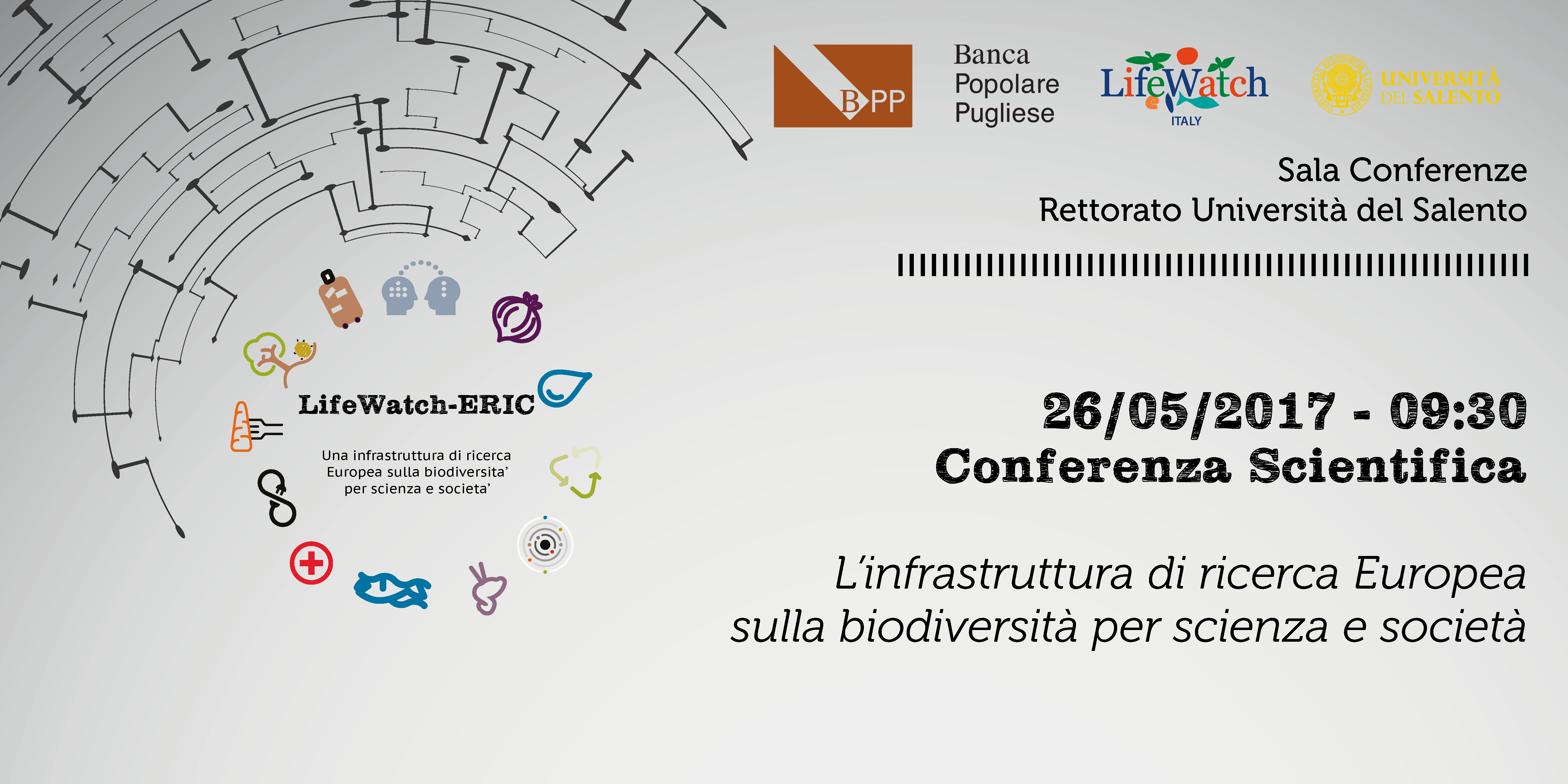
Lecce, 26/05/2017
Il Centro Servizi di LifeWatch-ERIC e l’Università del Salento organizzano la manifestazione “LifeWatch-ERIC – L’infrastruttura di ricerca Europea sulla biodiversità per scienza e società” a Lecce dal 12 al 26 maggio 2017 per presentare al territorio la nascita del 14° consorzio di infrastruttura di ricerca europea (ERIC) istituito dall’Unione Europea.
L’iniziativa “LifeWatch-ERIC – L’infrastruttura di ricerca Europea sulla biodiversità per scienza e società” si propone di presentare l’infrastruttura ed il suo valore per il territorio ad un pubblico vasto attraverso eventi tematici incentrati su sviluppo economico e sostenibilità, sicurezza ambientale e salute dell’uomo, agroalimentare, comunicazione, e culturali, conclusi da una conferenza scientifica finale, in occasione della quale avremmo piacere ad invitarla a tenere una relazione.
La Conferenza si terrà Il 26 maggio, dalle 9:30 alle 15:30, presso la Sala Conferenze del Rettorato dell’Università del Salento, e si propone inquadrare la riflessione degli incontri organizzati nel corso dell’iniziativa che la precede in un contesto scientifico ed interdisciplinare. Aprirà i lavori, il Magnifico Rettore Prof. Vincenzo Zara, seguiranno gli interventi degli esponenti delle istituzioni che compongono il nodo nazionale e pugliese di LifeWatch, attori della società civile e rappresentanti istituzionali. La giornata si concluderà con la premiazione della gara nazionale di ecologia per le scuole secondarie “EcoLogicaCup“.
Si può scaricare il programma completo qui.
Sono disponibili online le presentazioni effettuate nel corso della Conferenza:
Biodiversità e vita – Prof.ssa Cecilia Saccone, Professore Emerito dell’Università degli Studi di Bari Aldo Moro
LifeWatch-ERIC, risorse, strumenti e servizi ICT per la ricerca su biodiversità ed ecosistemi– Prof. Alberto Basset, Università del Salento
Un caso di studio LifeWatch come approccio macroecologico al fenomeno delle specie aliene – Prof. Giuseppe Corriero, Università degli Studi di Bari Aldo Moro
Presentazione portale LifeWatch Service Centre – Links Management and Technology
Servizi ReCaS e tecnologie Cloud per le comunità della Puglia – Prof. Giorgio Pietro Maggi, INFN
“Cenerentola senza bacchetta magica”: metamorfosi culturale e sviluppo tecnologico per la condivisione dei dati nelle reti di Ricerca Ecologica a Lungo Termine – Dott.ssa Alessandra Pugnetti, CNR ISMAR e Rete LTER Italia
Lo studio della Biodiversità Molecolare nell’era dei Big Data – Prof. Graziano Pesole, CNR IBIOM
Il dialogo sulla biodiversità “tra” scienza e società – Dott.ssa Elisabetta Falchetti, ECCOM e ANMS
L’indagine sulla marine litter nella campagna di Goletta Verde di Legambiente – Dott. Sebastiano Venneri, Legambiente
